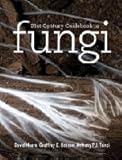21st century guidebook to fungi / David Moore, Geoff Robson, Tony Trinci.
Material type: TextPublication details: Cambridge ; New York : Cambridge University Press, 2011.Description: xii, 627 p., [62] p. of col. plates : ill. ; 28 cm. + 1 CD-ROM (4 3/4 in.)ISBN:
TextPublication details: Cambridge ; New York : Cambridge University Press, 2011.Description: xii, 627 p., [62] p. of col. plates : ill. ; 28 cm. + 1 CD-ROM (4 3/4 in.)ISBN: - 9781107006768 (hardback)
- 9780521186957 (pbk.)
- Twenty first century guidebook to fungi
- 589.2 MOO/Cen 22
- QK603 .M616 2011
| Item type | Current library | Call number | Status | Date due | Barcode | |
|---|---|---|---|---|---|---|
 Books
Books
|
Goa University Library General Stacks | 589.2 MOO/Cen (Browse shelf(Opens below)) | Checked out | 06/16/2024 | 140640 |
Includes bibliographical references and index.
Machine generated contents note: Preface; Part I. Nature and Origins of Fungi: 1. 21st-century fungal communities; 2. Evolutionary origins; 3. Natural classification of fungi; Part II. Fungal Cell Biology: 4. Hyphal cell biology and growth on solid substrates; 5. Fungal cell biology; 6. Structure and synthesis of fungal cell walls; Part III. Fungal Genetics and Diversity: 7. From the haploid to the functional diploid: homokaryons, heterokaryons, dikaryons and compatibility; 8. Sexual reproduction: the basis of diversity and taxonomy; 9. Continuing the diversity theme: cell and tissue differentiation; Part IV. Biochemistry and Developmental Biology of Fungi: 10. Fungi in ecosystems; 11. Exploiting fungi for food; 12. Development and morphogenesis; Part V. Fungi as Saprotrophs, Symbionts and Pathogens: 13. Ecosystem mycology: saprotrophs, and mutualisms between plants and fungi; 14. Fungi as pathogens of plants; 15. Fungi as symbionts and predators of animals; 16. Fungi as pathogens of animals, including humans; Part VI. Fungal Biotechnology and Bioinformatics: 17. Whole organism biotechnology; 18. Molecular biotechnology; Part VII. Appendices: Appendix 1. Outline classification of fungi; Appendix 2. Mycelial and hyphal differentiation; Index.
"Fungi have their own unique cell biology and life cycle, but also play critical roles in wider biological systems. This textbook provides an all-round view of fungal biology, ranging in scope from the evolutionary origins of fungi and other eukaryotes more than a billion years ago, to the impact fungi have on our everyday lives. Bringing mycology teaching right up to date, this unique systems biology approach emphasises the interactions between fungi and other organisms to illustrate the critical roles that fungi play in every ecosystem and food web. With more than 60 colour figures, examples of computational modelling and resource boxes directing students to areas of interest online, this uniquely modern textbook gives students an appreciation of fungi both at the organism level and in the context of wider biology. A companion CD features a hyperlinked version of the book and the fully integrated World of Cyberfungi website"--
There are no comments on this title.

